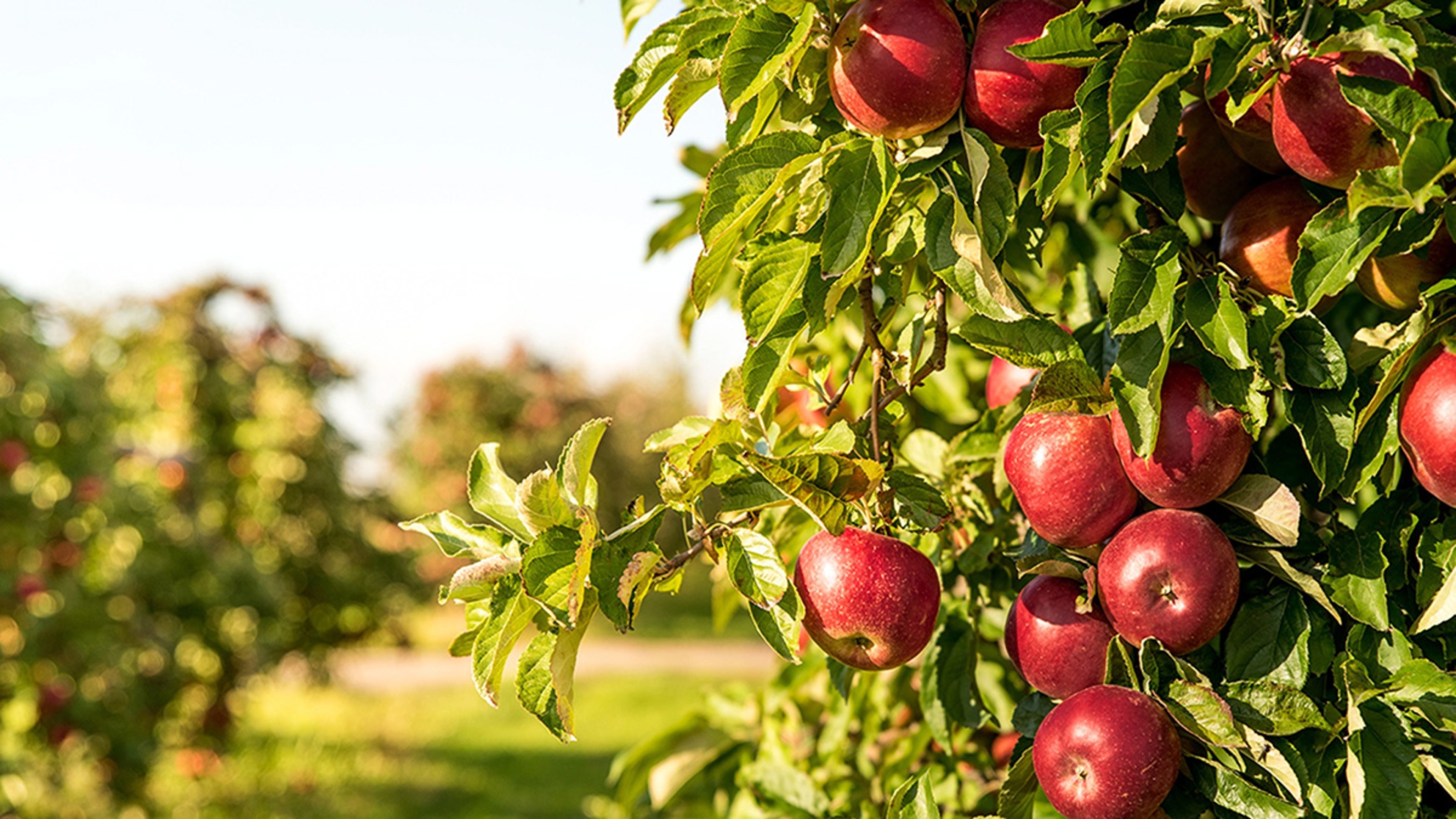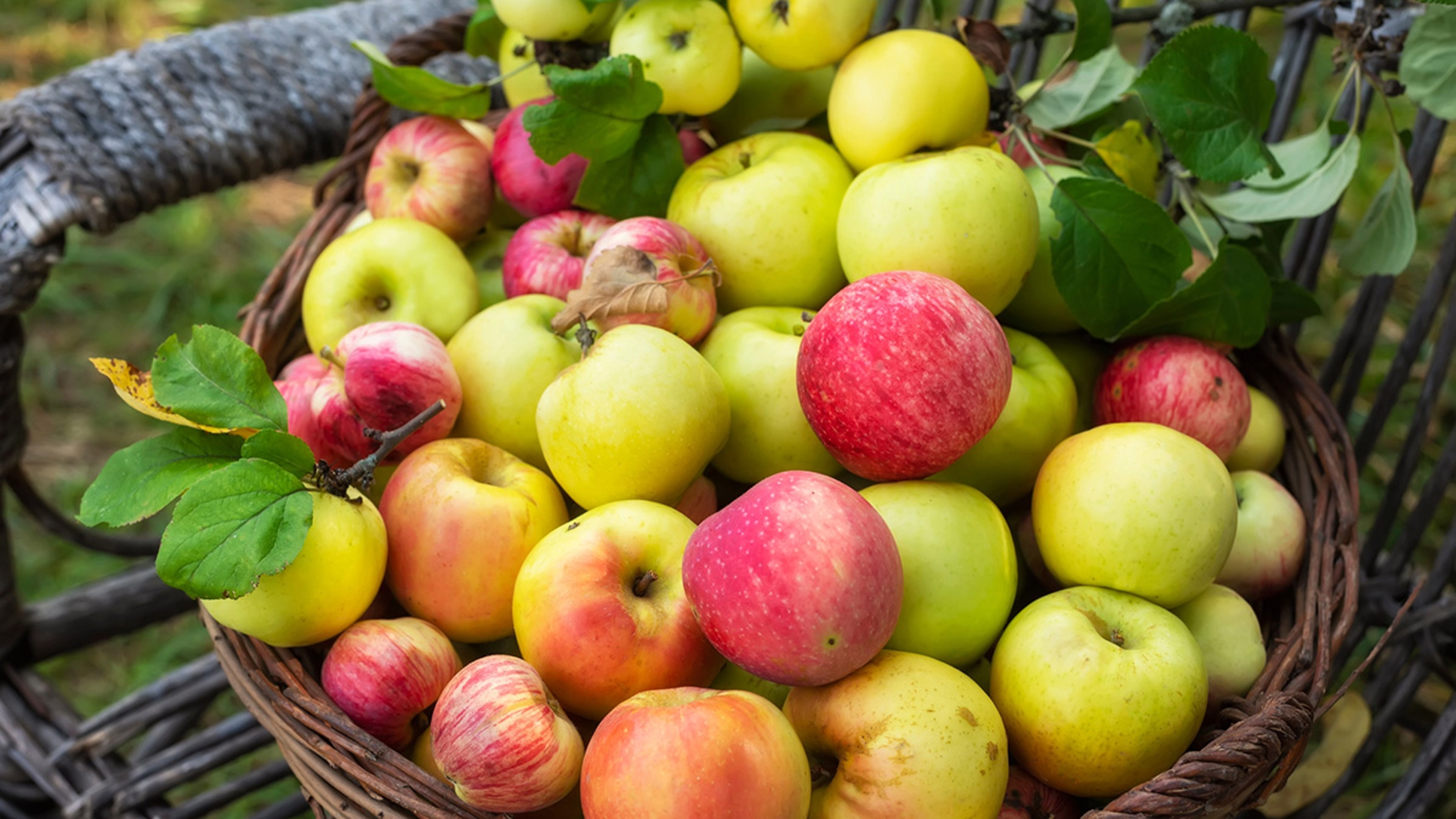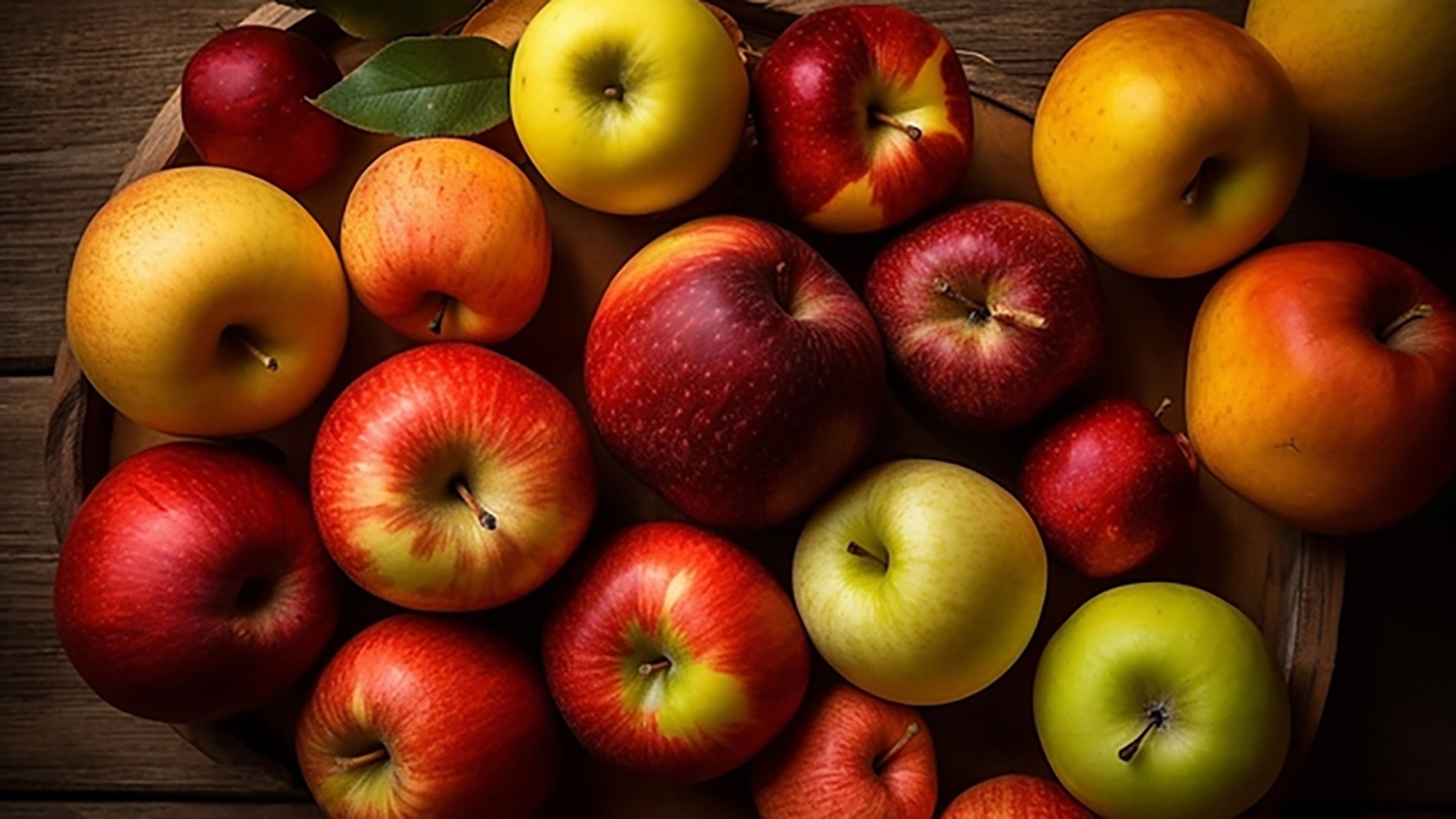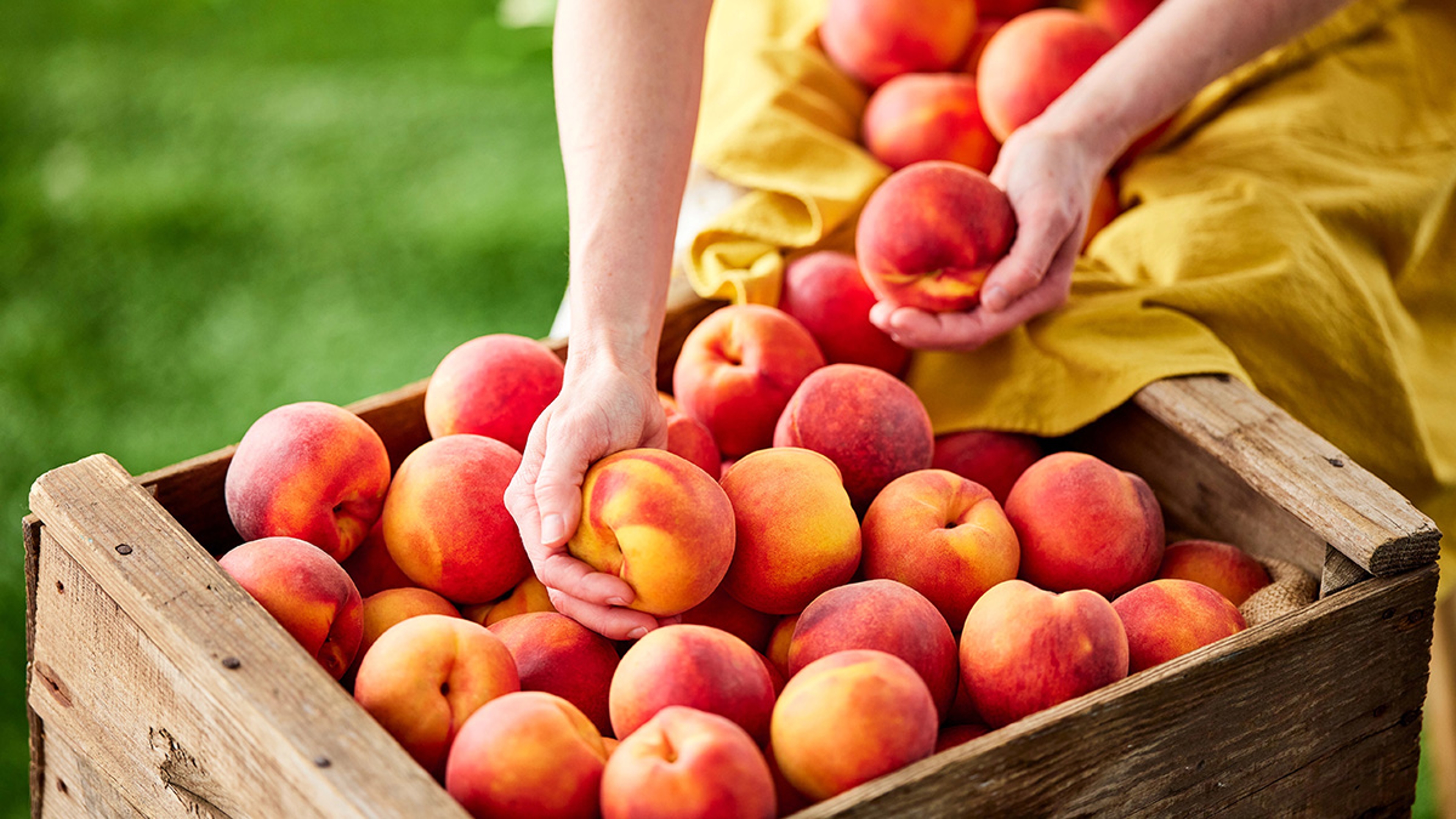An Irreverent Guide to Apples
Learn more about the fruit that spawned countless varieties and inspired a bushel full of expressions.
Sep 23, 2025
Long before the apple was synonymous with the world's most valuable company (and even longer before a goop-y actress named her first-born daughter thusly), the apple symbolized America. The fruit may have originated in Kazakhstan 750,000 years ago, but once World War II soldiers said they fought “for mom and apple pie," the metaphor was cast. The apple has been one of our most beloved and versatile fruits ever since.
And what's not to love about apples? They're crunchy and juicy, boast that yummy apple taste, sport a nice shine (depending on the variety), are fun to pick off trees, fit well in the palm, and are the main ingredient in namesake pies that are to die for.

How the apple got its name
The name aepel comes from Old English. Back then, the word applied to any fruit with a hard core and chewable outside, which is why apples, along with pears and quinces, belong to the pome family — fruits with a core of several small seeds surrounded by a tough membrane, in turn embedded in eatable flesh.
What is the apple's scientific name?
Malus pumila is the acquired scientific name for the fruit. Because of extensive genetic line-crossing, however, apples are also known as Malus domestica, Malus sylvestris, Malus communis, and Pyrus malus. To the surprise of no one, Malus means apple in Latin.
Where do apples grow?
Where don't they grow? According to the Agricultural Marketing Resource Center, 32 states grow apples commercially (and that doesn't even cover states where apples grow but aren't sold). The top 10 apple-producing states, according to the U.S. Apple Association, are: Washington, New York, Michigan, Pennsylvania, California, Virginia, North Carolina, Oregon, Ohio, and Idaho.
How to say "apple" in 7 languages
Now that you know how to say "apple" in Latin, let's take a look at how other languages (that are actually spoken) say this fruit's name.
- Pomme | French
- Manzana | Spanish
- Tufaahatan | Arabic
- Elma | Turkish
- Sagwa | Korean
- Appel | Dutch
- Alim | Mongolian

How many types of apples are there?
The number of apple varieties worldwide varies greatly, depending on the source. It's safe to say, though, that there are thousands. Here in the United States, there are about 80 types of apples. Of those varieties, six are celebrated by Harry & David.
“When we've sampled apples that are very sweet or very tart, almost nobody likes them," notes Jane Hunts, merchandising manager for the Harry & David fruit division. “Really, it's finding that balance close to the middle. Also, there's mouthfeel — some people want a crunchier apple than others. For our apples, we want some real bite!"
Smitten: As wordplay goes, forgive us for reaching for the low-hanging fruit, but we truly are smitten with the Smitten apple, which comes from both Washington State and New Zealand (making them available throughout nearly the entire year). With a red “natural" wild-apple red coloration over a yellow base, this type of apple boasts a fine balance between sweet and tart as well as a strong crunch.
Envy: Over a yellow-green base, Envy apples feature firm, thick, smooth skin with a glossy, crimson finish. The apple is crisp, and tastes sweet and tangy.
Jazz: This apple's skin is thick, smooth, and glossy, with a dark red blush and striping over a yellow-green base. The flesh, meanwhile, is firm, dense, and crunchy. Jazz apples have a refreshing and balanced sweet-tart flavor.
Cosmic Crisp: A cross between Honeycrisp and Enterprise apples, dark-red, firm Cosmic Crisps first hit the scene in 2019, after taking more than 20 years to develop. The apple was created to combine the texture and juiciness of the Honeycrisp with the late-ripening behavior and long storage of the Enterprise. These are high in sugar and acid content.
Empires: Making their debut in 1966 in the Empire State, Empire apples are a cross between the Red Delicious and McIntosh varieties. This crisp, juicy apple has a delightful sweet-tart flavor and creamy white flesh, making it a good all-purpose apple.
Honeycrisp: This apple has a honeyed, mild flavor and practically explosive crispness. Juicy and sweet, Honeycrisp's skin is a distinctive mottled red over a yellow background, with coarse flesh.
Does an apple a day really keep the doctor away?
Given the seemingly endless health benefits associated with apples, this saying alludes to a diet flush with apples keeping you out of the I.C.U. and away from the pharmacy. Apples are believed to lower your chances of developing some cancers, help prevent diabetes, keep hearts healthy, lower cholesterol and blood pressure, aid in digestion, and more. The fruit is chock full of fiber, vitamins C and K, potassium, and antioxidants.
9 more American expressions containing the word "apple"
The apple doesn't fall far from the tree: Refers to a child who demonstrates traits similar to those of his or her parent(s).
The apple of my eye: Refers to a special, treasured, beloved person.
How do you like them apples?: A display of one-upmanship along the lines of "What do you think of that?"
One rotten apple spoils the whole barrel: When the bad characteristics of one person spreads to, and influences, a group. And this isn't just an expression — one bad apple will spoil the whole bunch.
As American as apple pie: Given that apple pie has become synonymous with America, comparing someone/something to apple pie means they exhibit strong, patriotic American traits.
Like comparing apples to oranges: Comparing two things that aren't really alike. Yes, apples and oranges are both fruits, but they're vastly different fruits.
To upset the applecart: To derail plans or disrupt the status quo.
An apple polisher: A flatterer; someone who compliments to win approval, aka a brown-noser.
The Big Apple: New York, New York.

When is apple season?
September is prime apple-picking time. Depending on the variety, though, some apples are harvested as early as July and as late as November.
When is National Apple Month?
Right on the heels of the best apple-picking month in the U.S. comes National Apple Month in October, with Oct. 21 recognized as National Apple Day. Throw a party and serve up the apple pie, apple butter, apple cider, apple crisps, and, oh yeah, just plain apples!
How to choose the best apples?
Look for apples that are firm, not squishy or bruised. As for hue, prime color depends on the variety you're buying. Ask your grocer or orchardist if you're not sure.
How to ripen an apple
Say you find apples that are still a bit green (no, they're not Golden Delicious) but have potential. Fear not: You can take them home and ripen them. For best results, store them in a loosely sealed paper bag.
Can anything be done with the seeds?
You've heard of Johnny Appleseed, yes? This early 19th-century pioneer (John Chapman, actually) earned his nickname by growing apple orchards in Pennsylvania and throughout the western frontier. There's even a Johnny Appleseed Day!
Just know, though, that it's actually not that easy for amateurs to grow apple trees from seeds. For one thing, in this modern, cross-bred world, the seeds you harvest may actually yield apples different from the parent (and possibly not as good). And your particular climate may be hostile to seeds from store-bought apples.
Meanwhile, you should also avoid eating apple seeds, since they contain poisonous cyanide — albeit in small amounts.
So really, best to leave the apple seeds to Johnny.
.svg?q=70&width=384&auto=webp)
























